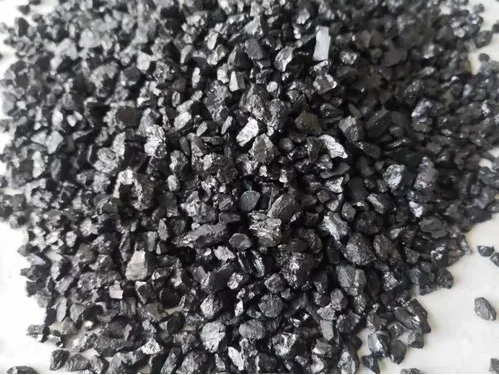
Anthracite Carbon Additive is used for a variety of industries such as electricity, metallurgy and coal power plant. Due to its physical properties, it is also a great choice for municipal treatment systems. This system is more efficient and reduces loss of head compared to gravity sand filters.
Thermolysis of anthracite and copper acetate leads to combustion intensification, as well as changes in gas phase products. CO concentration profiles and NOx emissions show that they increase nonlinearly with fuel size.

It is made from a very high-quality raw material, which has gone through a variety of processing steps. This material is widely used in a variety of industries, including metallurgy and electric power. It has excellent characteristics such as low ash content, low resistivity, and high density. Also, it is an excellent filler in plastics.
EDX of samples containing anthracite revealed that addition of copper acetate increased anthracite oxidation. Especially at the beginning of and ending of intensive oxidation. The effect of copper acetate on anthracite oxidation decreases as particle size increases, possibly due to an increased amount of space between the anthracite atoms.
This process accelerates the oxidation by decomposing copper acetate on anthracite particle surfaces and bulk, which creates additional gas phase products. This leads to a significant drop in the oxidation characteristic temperatures in the case of anthracites modified by additives.
DC electric cachiners are ideal for anthracite coal calcination, as they remove moisture and volatile substances. It can also be used to improve several carbon parameters like anti-oxidation. density, and conductivity. The traditional method of grinding can take up to an hour.
Calcined Anthracite can be used as carbon addition in aluminum and steel industries. This also contributes to achieving carbon reduction targets and reduces emissions. However, the volatility in raw materials and high transport costs could be major factors for limiting market revenue growth.
Anthracite is a form of coal that is compact and hard with a very high carbon content, and it has many applications in the manufacturing industry. It is often used as a substitute for petroleum coke in the production of metal castings. Also, it is used to filter drinking water systems. Because of its physical characteristics, it can provide better treatment results than sand gravity filters. Also, the low pore sizes allow less back washing and water waste.
The effectiveness of anthracite based activated charcoal in the removal of waterborne pathogens has been studied by a number of researchers. Nevertheless, there were mixed results due to several factors. For example, some samples exhibited high concentrations of silica and iron during the froth flotation process. Moreover, the ash composition of raw anthracite varied widely between four different types.
Analyses using X-ray Diffraction (XRD), showed that anthracite particles have highly ordered, distinct mineral structures. After chemical activation of KOH these minerals are rearranged and become ultrafine intertwined structure. These changes are consistent with a reduction in the ash content.
This study used chemical activation of KOH to simultaneously regulate anthracite pore formation as well as ash content. Typical Type I isotherms were observed across various KOH-to-anthracite ratios, exhibiting well-developed micropores and high production yields. KOH activation was superior to physical activation for reducing anthracite based activated coal's ash and specific surface.
Increasing demand for steel production is one of the major factors driving the global calcined anthracite carbon additive market. Carbon additives are used in metal production instead of coke, which reduces carbon emissions and the footprint.
Calcined Anthracite Carbon Additive is manufactured from Ningxia high-quality Taixi anthracite as raw materials and then through selection, fine washing, high temperature, dry distillation, at 1250 degrees Celsius, to reduce the volatilization and improve density, strength and oxidation resistant. Carbon additives are widely used during the steel-making process and in founding.
Gas Calcined Anthracite is also known by the names Injection coke, charging coke, Recarburizer and Carbon Additive. The product is useful as a fuel, but it also reduces sulfur, ash nitrogen, steel slag, black tar, sludge and other contaminants. This alternative is much cheaper than traditional coke. It can be used in all types of furnaces.

Write a Message